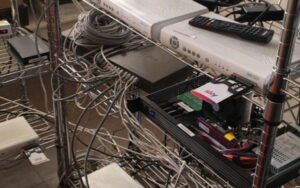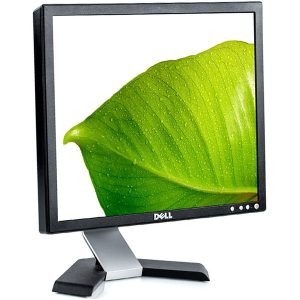IPTV, what it is and what are the characteristics and risks of the piece
Phenomenon of the moment, the world of IPTV is very varied, full of offers, features and why not, risks.

The risks of IPTV are obviously not linked to IPTV itself and its legal offers, but to those illegal proposals known in the form of a piece.
But let's start from the beginning and see better what IPTV and above all legal IPTV consists of.
IPTV
The development of the internet network and its average speed has led, also in Italy, to the creation and diffusion of special offers and packages. In addition to streaming, IPTV has appeared, i.e. the possibility of enjoying television channels broadcast via the web .
IPTV is in fact the acronym for Internet Protocol Television , i.e. the method that operators and dedicated platforms use to transmit television signals through the Internet.
Difference between IPTV and WebTV
The difference seems small but is still important. IPTVs are those that transmit live television signals, that is, they allow you to see what is being programmed at that moment. However, when the signal is sent "on demand", i.e. the user chooses when to see it (as in the case of YouTube but not only), the service is defined as WebTV .
This is a significant difference, obviously given by the fact that when viewing live content you must focus on signal stability, signal quality and minimal if not zero delays.
 IPTV protocols
IPTV protocols
Given the different needs compared to WebTV , the transmission protocols are also different. IPTVs usually exploit Unicast-type flows, flows that stand out as they are streams addressed individually to each user of the service.
Since the need for data transmission is very different from the classic use of the Internet, the protocols also change significantly. No http or ftp for IPTV, but different protocols.
In particular, there are three that are used by IPTVs:
- RTP, i.e. Real-Time Protocol
- RTSP, i.e. Real-Time Streaming Protocol
- IGMP, i.e. IP Group Membership Protocol
As regards coding, the standard is now that of MPEG-4, an efficient system that guarantees good image quality together with not too high bandwidth usage.
Where are the channels located?
So many channels, where to find them? The same can be found in the IPTV lists, real playlists that contain a text file for each IPTV channel. The link to the channel itself is then placed inside this file.
There are two lists of IPTV channels:
- Public lists: they are free and free to use. They contain information on the position of the channels and how to reach them. They usually do not contain information relating to paid channels, and when they do, it is usually information of short duration and limited validity
- Private lists: these are paid lists that contain the list of paid IPTVs. This list is also sold for money, usually on a monthly basis. The channels contained in this list are paid ones, allowing, with a few euros a month, access to a super complete proposal that includes various suppliers. Using or "subscribing" to these private lists is illegal.
Both lists cannot be considered completely "legal", but a blind eye is usually turned to the public ones, while the private ones, the most sought after, are continuously monitored by the operators and the Financial Police.
Private lists are highly sought after, because with just a few euros a month they allow you to have an infinite list of paid channels. high resolution and any type of content you want. A service that is obviously illegal and punishable by law.
Il Pezzotto 
When we talk about IPTV, at least in Italy, this term is connected to that of Pezzotto or rather, Pezzotto TV .
This term normally refers to an illegal decoder, identified as an Android Box. The function of this decoder is to allow you to download and receive private IPTV at the cost of a few euros per month.
The Pezzotto is therefore an illegal decoder which costs between €50 and €100. To this "one-off" cost it is then necessary to link that of a monthly subscription, for a rate that is usually around €12 every 30 days.
How the Pezzotto works
At the base of everything there is a "criminal" center, where the bad guys obtain the transmission signal via an original subscription for each platform (Sky, Dazn, Netflix etc.).
The same is then extrapolated and sent to "secure" foreign servers and from there sent to illegal subscribers in our country.
Finding the codes and systems to take out the Pezzotto is not complicated, but be careful that it is illegal, not only for those who transmit the signal but also for those who use it, even at home and not only for "business" subscriptions.
 What do you risk by using Pezzotto?
What do you risk by using Pezzotto?
Since it is an illegal device and subscription, both those who transmit the signal and those who receive it are at risk. Leaving aside the responsibilities of those who transmit it, let's focus on those of those who benefit from it.
Italian law has in fact identified this fraudulent activity as a violation of copyright.
Being charged with this charge risks not only a large fine, but also a criminal charge that can lead to one to three years in prison.
The controls are then very stringent, in compliance not only with the requests of the platforms, but also those of the European Union which is targeting these offenses not only in Italian territory.
A legislative proposal has already been announced and attempts are being made to create a joint venture between the platforms that sell the service and the telecommunications companies. These two players will then be joined by the easy traceability of the payment system (with the exception perhaps only of those who pay in crypto). This makes the use of the piece a risky operation, for a risk that certainly exceeds the advantage provided by this fraudulent activity.
IPTV can be an excellent opportunity for the development of the network , communications and content distribution. However, if not adequately punished, fraudulent use of the same could represent a substantial "brake" for operators who decide to invest in this transmission technology.











